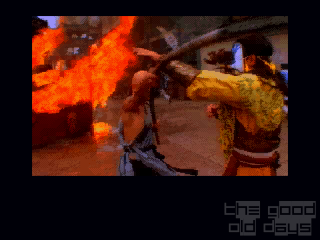By 1985, Microprose had established itself as prime supplier of military flight simulations. With former US Air Force pilot Bill Stealey loudly promoting the games developed chiefly by his co-founder Sid Meier, their name already stood for technical quality, well-designed software and... highly warmongering contents. It was the Reagan years, after all.

Silent Service at least used a historical scenario: the Pacific naval theatre of World War 2. Going against Imperial Japanese fleets. Not exactly nice, but fairly tame by Microprose standards of the time. Which didn't stop the game from being banned in Germany, but then again, which wargame wasn't? The market validity of a submarine simulation on home computers, in general, had yet to be shown, however. Would people want to play such a thing without the physical periscope gimmick which had graced about every arcade machine? The game turned into an astounding success, essentially founding a whole new sub-genre.
What made and makes it so appealing? First and foremost, the simulation is quite action-packed. Saving itself any strategic considerations, the scenario nevertheless caters for drastic changes of pace at tactical level.
Each battle begins with a sighting. Transport ships and troop transporters are easy targets, though usually protected by one or more destroyers, which obviously command much more firepower than a puny submarine. So it is all a game of surprise and detection. Carefully approaching under water, periscope carefully up, getting in position to fire the first wave of torpedoes. Hoping to maybe already take out some of the dangers. Then changing course, going down or even simply stopping the engines in order to shake the now alerted enemies off your trail.

Slow and careful phases, sneaking around, give way to short, but immensely intense outbursts of quick action, only to go back into silent mode again right after. If everything goes right. If they got your scent, water bombs will soon be dropping down. The dreaded ping of the enemy sonar spelling approaching doom. All the more effective considering the game is otherwise mostly silent. For sure, that would be the time to eject some debris as diversion. Claustrophobia sets in. If everything finally does work out, there is the incredibly rewarding moment of triumph, emerging from the depth to finish off those now defenceless transports.
Night and day influence missions significantly. Not just a swap of colour palette, starting at dusk and even more so during the night, surface attacks become a possibility, adding even more tactical options. After all, ship batteries can charge while above water, and darkness may provide sufficient cover.
The level of semi-realistic simulation configurable at the start, the game allows for different difficulty levels. What they all have in common is the effective control scheme. Freely switching between submarine's main stations, it is the player's task not just to set the course and depth, but also to fire torpedoes as well as the deck guns. The zoomable map does wonders to support operations. It reliably indicates torpedo positions. It accounts for line of sight: enemy ships start blinking when not actually visible anymore and position is only assumed. The damage report and overall ship status is more than valuable and intuitive to read.

It all feels very hands-on, immediate, without the typical abstractions found in many other military vehicle simulations. At least after looking up the most basic keystrokes in the manual. The fact that this succeeds, without sacrificing key simulation aspects, makes this one rise above its in-house and market competition.
The second major factor is that beyond the typical play style of going mission by mission, as common in their military flight simulations, Microprose allows for a patrol game mode. This allows players to sail through the Pacific and having random encounters before finally returning to an Allied base for refuelling, repairs etc. It enables endless replayability, not being limited by a fixed set of pre-defined encounters.
All that said, it is no wonder that when Silent Service II was released five years later, it was essentially only a graphics and sound update. Shortly after, Microprose would have called it Silent Service Deluxe or Silent Service Gold, in line with their other remakes they released at the time. Nevertheless, this second part blew everyone away again. Speaking volumes of the original's strong design, which still shines today.


Comments (1) [Post comment]